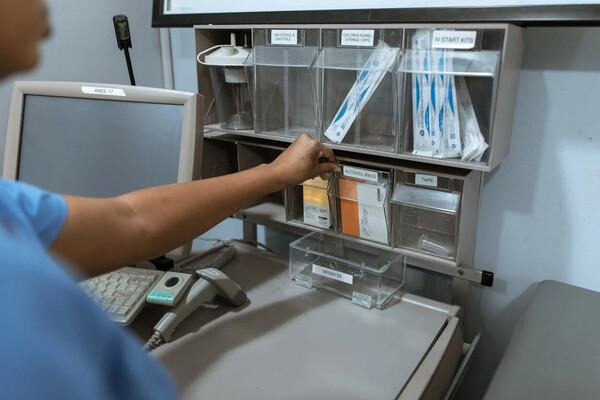Main Second Level Navigation
- Welcome
- Why Toronto?
- History of the Department
- Vision & Strategic Priorities
- Our Leadership
- Our Support Staff
- Location & Contact
- Departmental Committees
- Department of Medicine Prizes & Awards
- Department of Medicine Resident Awards
- Department of Medicine: Self-Study Report (2013 - 2018)
- Department of Medicine: Self-Study Report (2018 - 2023)
- Communication Resources
- News
- Events
Doctors' Notes: Why tuberculosis remain a problem in Canada

Dr. Sarah Brode
 Republished from the Toronto Star
Republished from the Toronto Star
It’s 2017, and yet here we are talking about the rise of tuberculosis (TB).
How can that be?
Many of us are under the misconception that TB is a disease that was brought under control decades ago and no longer has a profound effect on the health of the world’s population — let alone right here in Canada.
Nothing could be further from the truth. Tuberculosis remains an epidemic in many parts of the world, and newer, nastier versions are only a plane ride away. Last year, the World Health Organization determined that TB is now the globe’s No. 1 infectious killer, surpassing HIV/AIDS. In 2015, 10.4 million people around the world became ill with TB and 1.8 million people died.
Here in Canada, about 1,600 new cases of TB are diagnosed every year — but don’t let that number fool you. While this doesn’t sound like a homegrown epidemic, we cannot lull ourselves into thinking we are immune from the spread of this disease.
TB is an airborne disease caused by the bacteria Mycobacterium tuberculosis. Microscopic droplets of the disease can be spread from person to person when someone with active TB coughs or sneezes, but in general it takes prolonged exposure to catch it. The good news is TB is preventable and it’s curable.
Approximately 70 per cent of Canadian TB cases occur among foreign-born individuals and 20 per cent among Canadian-born indigenous people — and while these numbers are slowly decreasing, the bad news is we’re not reaching our reduction targets quickly enough. Ontario has about one third of all cases.
In fact, current statistics show Canada now lags behind the U.S. when it comes to decreasing TB rates. Many of my colleagues around the country would likely agree that when it comes to reducing TB rates, there’s a potential sense of complacency and less of an urgency than there was a decade ago. So, what is affecting our progress?
Firstly, there are continued high TB rates among indigenous peoples. For example, recent numbers from Statistics Canada show the incidence of TB in Nunavut is comparable to rates in some countries in Asia and Africa. There are multiple reasons for this, but poor housing conditions (overcrowding and poor ventilation), higher rates of other health conditions such as diabetes and malnutrition and reduced access to medical care are all contributing factors.
Secondly, immigration patterns have changed. Decades ago, immigrants coming to Canada hailed from European countries — where TB rates are relatively low. Nowadays, they are primarily from Asia and Africa — where TB rates are much higher.
These two factors alone should be a wake-up call for Canadian health authorities. We need to get back on track and treat TB with a renewed sense of urgency, focusing on our indigenous and foreign-born populations. Canada needs to invest in TB research, clinical care, and public health programs. And most importantly, there is a vital need for Canadian provinces and territories to work together in the fight against TB.
What you need to know about TB
- TB mainly causes symptoms in the lungs and airways. It can also affect other parts of your body, such as your bones, kidneys and lymph nodes.
- About 90 per cent of people who become infected with TB do not develop the disease. This is called latent tuberculosis. They do not feel sick, have no symptoms, and do not spread TB to others.
- Those who do get sick have active tuberculosis. The symptoms of active TB can include a bad cough that lasts longer than 2 weeks; makes you cough up blood sometimes; makes you cough up phlegm sometimes (thick liquid that comes up from your lungs or airways)
- Call your health care provider if you have any of the listed symptoms or think you may have been exposed to TB
- TB can be cured by taking antibiotics. You must take antibiotics to avoid spreading TB to others and increasing your risk of getting TB again, especially a type of the disease that is harder to treat.
- In severe cases, the disease may lead to death if untreated.
Dr. Sarah Brode is an assistant professor, Department of Medicine, University of Toronto, a staff respirologist at University Health Network, and heads the Tuberculosis Service at West Park Healthcare Centre. Doctors’ Notes is a weekly column by members of the U of T Faculty of Medicine. Email doctorsnotes@thestar.ca .



